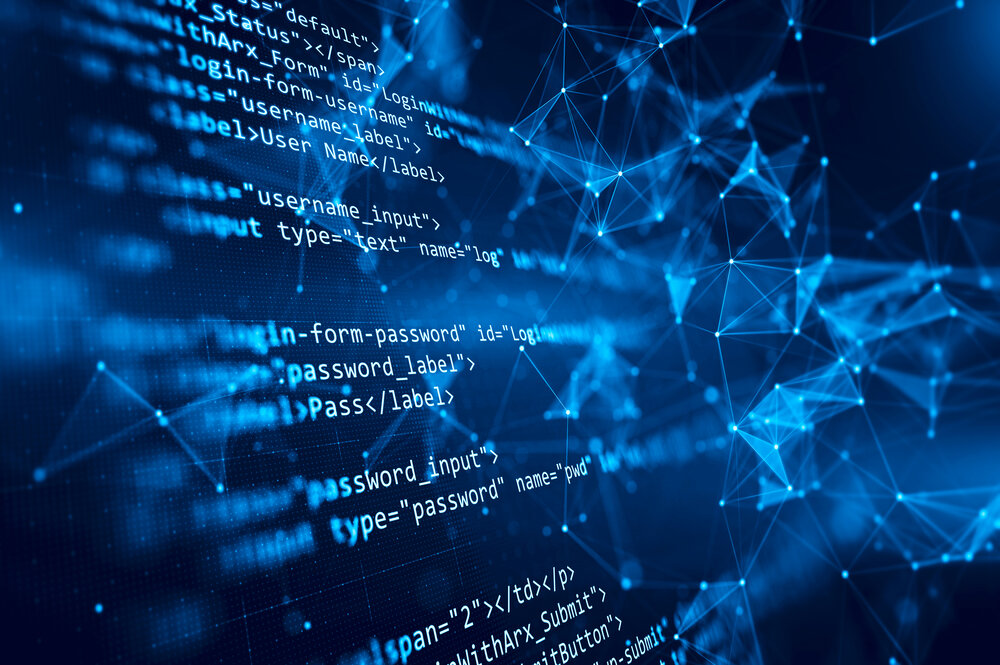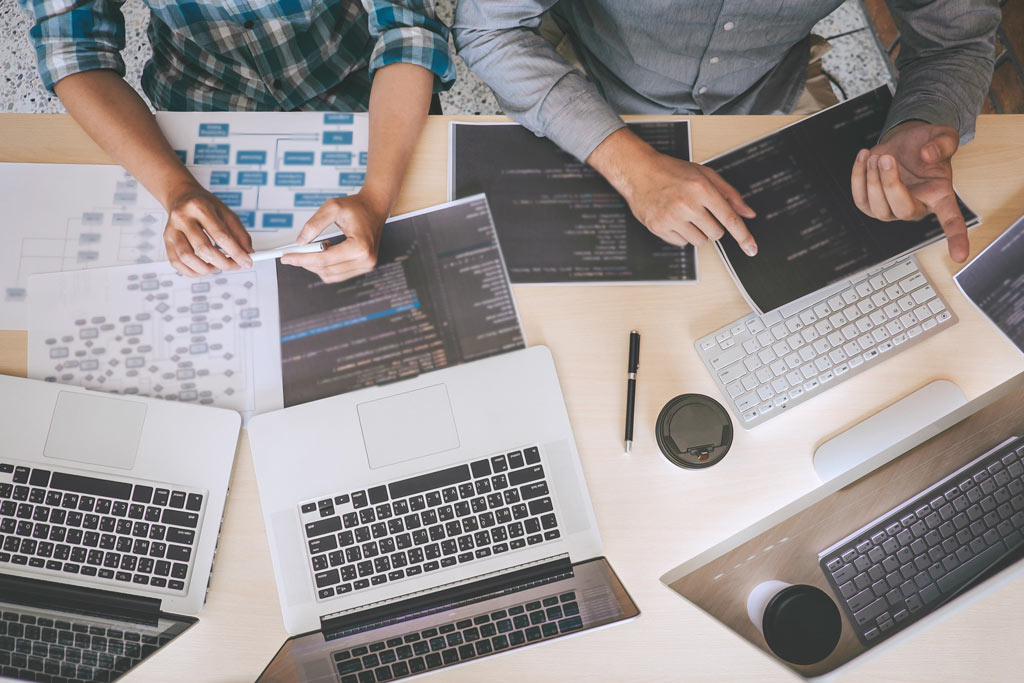SEO is the art of enhancing web pages for SERPs. We can break search engine optimization methods down into three types: technical SEO, on-page SEO, and offsite SEO. In part 2 of this 3 part course, we will reveal what you need to know about on-page SEO to improve your visibility within search results.
On-Site/Page SEO
On-page SEO refers to elements you can optimize for search engines on your web pages. These elements allow you to tell search engine bots specifically what your webpages offer for search users.
We can find and edit many of these elements within your website’s HTML code, CMS, website builder, or other platforms to create your website. Some website owners may have to rely on their web designer, third-party plugins, or extensions for their main platform to make on-page SEO upgrades.
Some of the most important updates to your on-page SEO efforts will be made simply by editing the content displayed on the page to users. We’ll discuss more about these elements later in the post. But first, let’s look at how we know on-page SEO is essential to improving your website’s visibility in search.
Why is On-Page SEO important?
Google offers detailed guidelines and instructions on helping Google find your web pages and understand the content on them. You can also view 175-page criteria given to Google’s Search Quality Raters, who manually review how website content has been optimized.

Bing also teaches webmasters how to make their sites more obvious in SERPs using on-page SEO. Yahoo published webmaster guidelines, but many of those pages refer web admins to Bing’s website.
In addition, both Google and Bing offer webmasters tools to analyze their website performance with search engines and users.
- Webmaster tools from both Google and Bing analyze your website’s performance in the specified search engine. This includes reporting and recommendations to fix technical and on-page SEO errors like missing metadata, structured data, duplicate content, etc.
- Google Analytics analyzes your website’s performance concerning user experience. This includes reporting on how long users stay on your website, how they interact with your website, and why they leave.
How can you improve on-page SEO?
The following are steps you can take to improve on-page search engine optimization for your website content.
Rate Your Content Quality
Proper on-page SEO should begin with an audit of the content on your website. According to the guidelines for Search Quality Raters at Google, high-quality content has the following.
- Strong expertise, authoritativeness, and trustworthiness.
- “A satisfying amount of high-quality MC (main content)…” or enough content to show expertise, authoritativeness, and trustworthiness on the page topic.
- Complete information about the website owner and content creator(s).
- An author and/or publisher with a positive reputation.
We should place every page you designate as high quality on a list in order of its importance to your business. Your homepage, for example, is more important than your privacy policy page. Similarly, your most popular blog post is more important than your least popular one.
Single out content that is not professionally written, includes an abundance of grammatical errors, doesn’t satisfy the title’s promise, or was clearly not written by a subject expert. If you have pages with inferior quality content on your website, you have a few options.
First, you can upgrade the content based on the page’s importance. An inferior quality blog post that receives little traffic and does not rank well in search should not be upgraded. A product page with a high bounce rate, however, should.
If we relate the problem to your content’s length, the next option is to merge your low-quality content. For example, you may have ten short blog posts about different ways to cook chicken. Instead of having ten low-quality pages, combine the posts. This will transform those ten low-quality pages into one piece of higher quality content.
The third option for web pages with inferior quality content is to delete and redirect. Instead of combining the earlier-mentioned ten low-quality pages, delete them and redirect each of their URLs to your main landing page on chicken recipes.
Just don’t forget to redirect with the third option. Otherwise, you will convert your low-quality problem into a 404 page “not found” problem.
For the pages that are staying on your website and visible to search, continue on to the next on-page optimization tactics.
Rewrite Title Tags
When Google includes a page from your website in search results, they typically show the page’s URL, title, and meta description or a snippet of text from the page relevant to the user’s search.

Title tags are between 50 – 60 characters in length and should include the primary keyword targeted on that page. Ideally, the primary keyword or phrase will be the first part of the title. This ensures that the most important part of your page’s name is displayed to search users.
If you intend to rank in Google News, include the date in the title. The date should reflect the most recent time the content was updated. We can also update this date on your web pages of structured data, which will be covered later.
Most websites will also include the brand name at the end of the title with a dash or other SEO-friendly separator. This can help with the authority/trustworthiness of search quality ratings if you have a reputable brand name.
It doesn’t hurt if the brand name falls past the 60 character mark. While they may not display it in search results, Google bots should notice and index it.
Rewrite Meta Descriptions
While a page’s meta description is not always displayed in search results, you can use it to your advantage when it does by rewriting it. Don’t think about SEO, but the user who searched for your targeted terms. What do they really want?
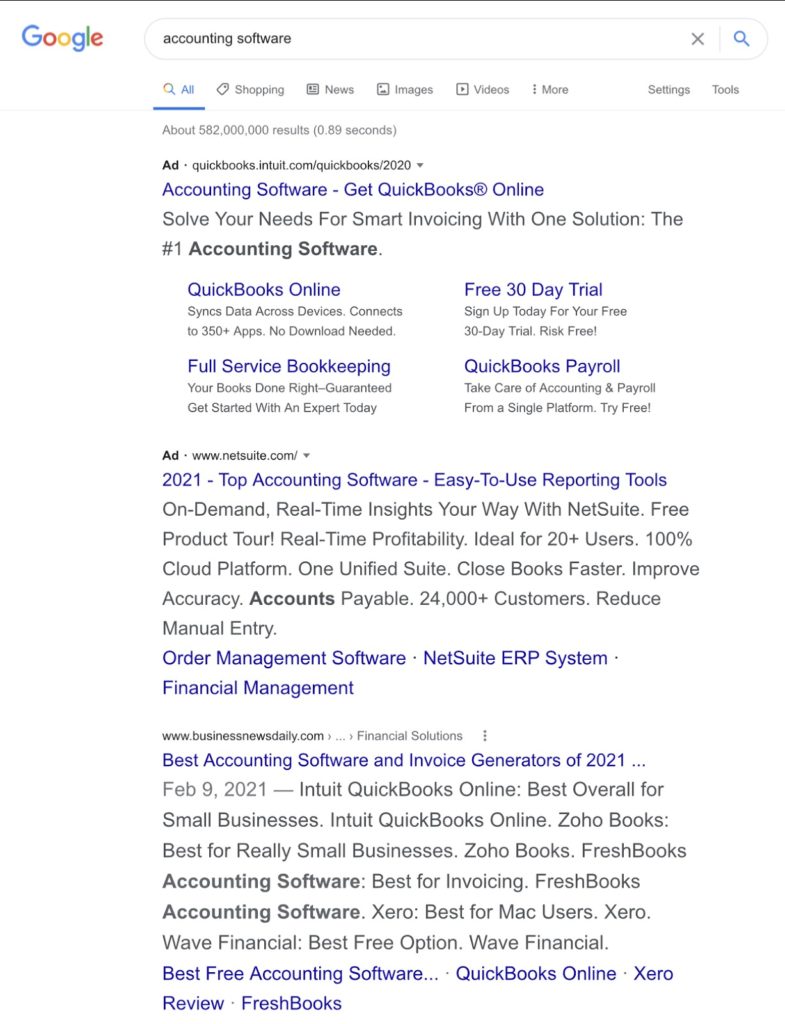
Once you can answer that, rewrite your meta description to let the search user know why your page is the best to click upon amongst its competitors. Also include your primary and related keywords in the 150 – 160 character description, as Google will bold them in search results (as shown above).
If you need help with the copy for your title and meta descriptions, look at the search results’ first page. What could you write in your page’s title and description to get people to click on your link? If you can increase your click-through rate, you can ultimately increase your SEO return on investment.
Upgrade Your Content
There are several ways to elevate your content’s expertise, authoritativeness, and trustworthiness. Best of all, there are tools that can help.
- BrokenLinkCheck.com will search for broken links on your website. It provides a report to help you find and replace or remove your broken links. Free and commercial versions available.
- Grammarly will use AI to correct spelling, grammar, clarity, formality, and plagiarism. Free and paid versions available.
- Hemingway helps make your writing bolder and clearer by suggesting edits to passive voice, run-on sentences, and more. Free.
- Semrush’s SEO Writing Assistant will suggest edits to optimize your search engines’ content with your target keyword phrase in mind. Paid.
Once you’ve used these tools to evaluate your content, take a final read-through to determine if any areas need to be updated for accuracy or recency. For example:
- If you offer step-by-step instructions, are those steps all up to date?
- If you have stock images or images from other websites, can you replace them with images you have created yourself?
- If you have original images, do they represent the most current version of what your content describes? For example, Facebook content should have a screenshot of the latest newsfeed design from a desktop browser or version of the app.
- If you have a list, are all the items still available and are they the most current versions available?
- If you include research to back up your content, is it data from the most current research or survey?
- If you have specialized content with health, financial, or other sensitive advice, do you have an expert writer or reviewer?
The best way to get inspiration for upgrading your content? Look at the pages outranking you on the first page of SERPs. These pages have content that is deemed of high enough quality to receive the most visibility in organic search. Follow their lead without stealing or duplicating their work.
In particular, if your content matches the length and covers the topic better than the competition. What you’re looking for is a unique angle, new data, the most recent screen captures, quotes from other industry experts, etc.
Optimize Your URLs
Keyword-optimized URLs can help with search rankings and make it a little easier to share your links on the web. The best way to do it is short and simple. Use https://yoursite.ca/primary-keyword-phrase/ as a template instead of https://yoursite.ca/how-to-do-the-primary-keyword-phrase-in-ten-steps/.
If you are updating an existing lengthy URL, properly redirect the old URL to the optimized one. Otherwise, you will increase errors on the technical SEO side and potentially lose hard-earned links to your website.
The thing you will lose when you change URLs, even with proper redirection, is your social share counts. If these metrics are crucial, you will not want to change your existing URLs and focus on better optimizing future content.
Add the Right Structured Data
If you want to stand out in search results, you need the right structured data (Schema markup) to ensure your page has the potential to become a featured snippet.
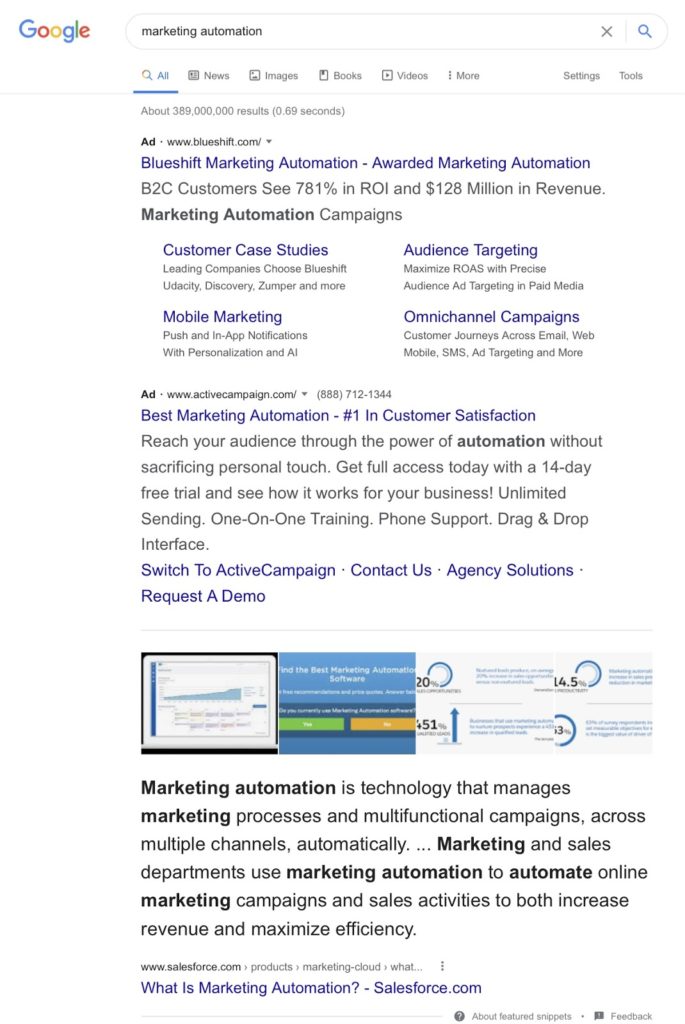
To choose the right Schema markup code for your web pages, enter their primary keyword phrases into Semrush. They will let you know which types of featured snippets Google uses in SERPs.
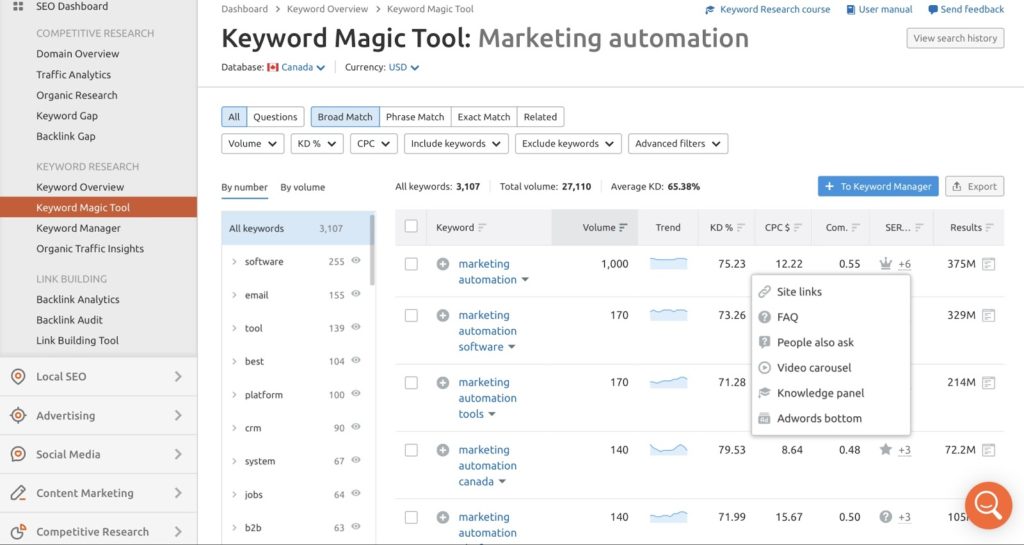
The easiest way to grab successful Schema markup? Grab it from the site currently featured in the featured snippet using Google Chrome Developer Tools, or grab it from Google’s Rich Results, Testing Tool.
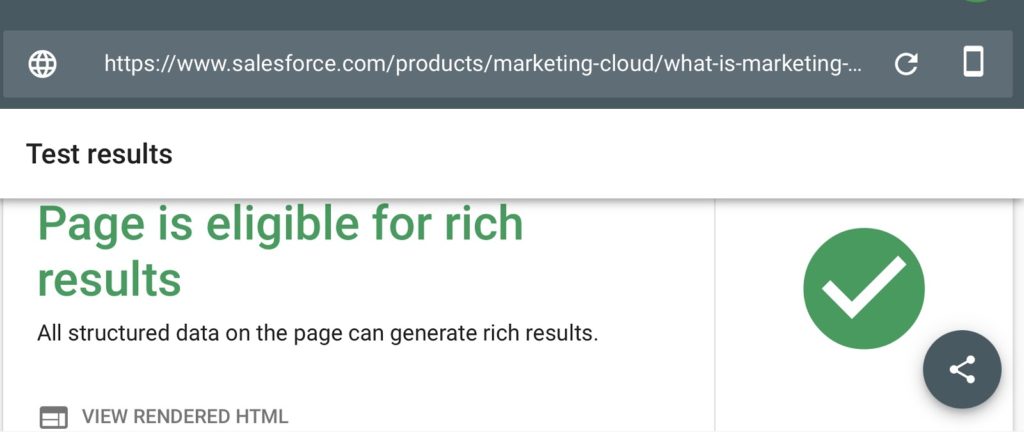
Once you have the code, please change it to match your organization and content. Then add it to your web pages in the HTML, your content management system, or via an extension or plugin.
Improve Page Performance
Aside from updates to your technical SEO, there are a few ways you can lower the time it takes your content to load for users and improving user experience, especially for smartphone users who have a bad data plan.
Start with the media embedded on your page. Whether you created original images or downloaded photos from a stock photography service, you may compress them in a way that preserves their quality but reduces their file size.
Google has recommended page sizes fall under 500kb since 2018. It may not be realistic to have that size of a page with visually appealing content. But you can improve your load time by taking photos that are over one gig in size and shrinking them to under 50Mb. For a web page with ten photos, it is a page with over 10Gb of content versus a page with a little over 500Mb.
Another way photos and videos may harm your website performance is through embedding or “hotlinking.” Some sites allow you to embed images or videos onto your web pages with a small snippet of code.
The result? When a user loads your web page, they will also have to load the embedded image or video from where the site is hosted. If the site hosting the image or video is running slow, that could affect your page load times as well.
If the file is small enough to store on your website server or a content delivery network service, download it and embed it from your source. Then you are not relying on another website to fix their issues before you can display your website content.
In Conclusion
On-page SEO elements allow you to describe your web page’s content to both search crawlers and users. Your SEO title and meta description can help you stand out on SERPs and increase users’ chance to click through to your website. Fast page speeds should ensure that users continue to learn more about your business.
Need help to improve your website’s on-page SEO? Contact Code Web for an audit from an SEO specialist!
